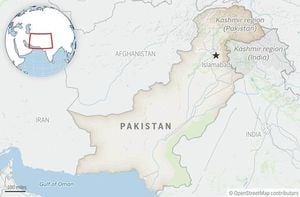As the world of business and manufacturing barrels toward an ever more digital future, two major events—one on each side of the Atlantic—are set to tackle the seismic changes shaping the landscape. On October 3, 2025, Cal State Fullerton’s College of Business and Economics will host the 24th Annual Securities and Exchange Commission (SEC) Hot Topics Conference, while in September, EMO Hannover 2025, the globe’s premier trade fair for production technology, will celebrate its 50th anniversary in Germany. Both gatherings promise to shine a spotlight on the transformative forces of tariffs, taxes, and especially technology, with artificial intelligence (AI) and digitalization at the heart of the conversation.
The SEC Hot Topics Conference, presented by the Center for Corporate Reporting and Governance, draws a who’s who of accountants, auditors, tax professionals, academics, attorneys, business executives, and business students. According to CSUF Business News, this year’s theme—“Tariffs, Taxes and Technology: Changes Coming Your Way, Are You Ready?”—could hardly be more timely. Attendees will be treated to keynote remarks from SEC Commissioner Hester Peirce, alongside panels featuring luminaries like former IRS Commissioner Charles Rettig. The agenda is packed, with deep dives into the tax policy outlook, the ever-shifting terrain of tariffs, and the knotty challenges of modern supply chains.
But the conference isn’t just about keeping up with regulation. It’s also about preparing professionals for a business world being reshaped by digitalization and AI. The ability to earn seven CPE credits and 5.5 California MCLE credits—whether in person or virtually—underscores the event’s value as a continuing education powerhouse. As CSUF Business News puts it, this is an “outstanding opportunity for continuing education in a year in which tariffs, supply chain changes and the continuing evolution of AI are transforming the business landscape.”
Just a few weeks earlier, in Germany, EMO Hannover 2025 will be buzzing with a similar energy—but with a distinctly industrial twist. According to Today’s Medical Developments, digitalization in production is the show’s defining theme, reflecting a technological transformation decades in the making. The digitalization of machine tools began with the first computer numerical control (CNC) systems back in the 1960s, predating even the trade fair itself. Now, as EMO marks its 50th year, the questions are no longer about whether to digitalize, but how to do it most effectively and economically.
“It is always a good idea for companies to first gain an overview of which applications are relevant for them,” explains Dr. Markus Heering, executive director at VDW, the German Machine Tool Builders’ Association and EMO organizer. Heering emphasizes that the first step for any factory is to create transparency in production by recording and exchanging targeted data. This, he notes, is the foundation of modern manufacturing competitiveness.
The benefits of this approach are easy to see in the digital solutions now offered by many machine manufacturers. Modern machines are complex mechatronic systems, fully digitalized and ready to join a company’s private cloud or intranet. But for this digital ecosystem to function, open and standardized data interfaces are a must. Enter umati (universal machine technology interface), a global initiative that will once again demonstrate the power of standardized machine networking at EMO Hannover 2025. With umati, new and existing machine tools—even those from different manufacturers—plus robots and other equipment, can finally ‘speak the same language’ and exchange data seamlessly on the factory floor.
The implications are profound. By evaluating large quantities of data, manufacturers can optimize production processes, spot errors early, and use resources more efficiently. This, in turn, boosts competitiveness on the world stage. “Optimized process control helps to better exploit the potential of a machine and use resources more efficiently,” says Professor Dr. Christian Brecher, executive director of the Fraunhofer Institute for Production Technology IPT in Aachen, Germany. According to Today’s Medical Developments, Brecher also highlights digitalization’s role in supporting the circular economy, where resource tracking and reuse mean less energy and material is needed for each part produced.
One of the most exciting trends on display at EMO Hannover 2025 is mass customization—the ability to manufacture small batches of personalized products without sacrificing the efficiency of series production. Digitalization and networking make this possible, enabling companies to adapt quickly to changing market demands. And with AI in the mix, the possibilities multiply. Algorithms can analyze recurring situations, identify patterns pointing to potential machine failures, and enable predictive maintenance. AI can also monitor production in real time, suggesting tweaks to lower energy consumption or boost output.
But perhaps the most pressing issue facing both business and industry is the shortage of skilled workers. How can digital solutions and AI help fill the gap left by retiring experts? At EMO Hannover 2025, this question will be front and center. The AI + Digitalization Area and the AI Hub@EMO2025 will serve as hubs for exploring how AI-based support systems can answer questions, provide instructions, and offer individualized training. The aim: to empower less experienced employees and ensure that companies don’t lose their edge as veteran staff move on.
For those eager to get a jump on the latest innovations, the “Made for AI & Digitalization” landing page on the EMO Hannover website offers a sneak peek at what exhibitors are cooking up. From networked machines and intelligent data analysis to cloud computing, the wave of digital transformation is cresting—and companies are scrambling to ride it.
It’s not just about technology for technology’s sake. As both the SEC Hot Topics Conference and EMO Hannover 2025 make clear, digitalization and AI are now central to tackling the world’s most urgent business challenges. Whether it’s navigating a labyrinthine tax code, untangling supply chain snarls, or finding ways to do more with less, the message is the same: adapt or risk being left behind.
And the stakes are high. As tariffs fluctuate and global supply chains remain in flux, the ability to harness technology for greater efficiency, sustainability, and customization could spell the difference between thriving and merely surviving. For professionals and executives alike, the coming months offer a rare chance to learn from the best, compare notes with peers, and get ready for whatever changes lie ahead.
With thought leaders like SEC Commissioner Hester Peirce and Professor Dr. Christian Brecher sharing their insights, and with practical demonstrations of AI and digital networking at the world’s leading trade fair, 2025 is shaping up to be a pivotal year for those ready to embrace the future. The only real question left is: are you ready?



